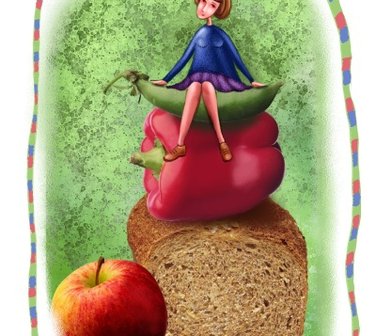How to eat in 2015
Each new year brings with it new trends — new fashion, new hot venues, new exercise regimes — and new diets.
Most importantly, 2015 is about making balanced choices with our diet — embracing nutritious options and keeping a healthy mindset when choosing the food that hits our plates.
“Last year was really extreme in terms of nutrition, ” dietitian Julie Meek says.
“We have access to so much information and it’s overwhelming for most people — the message needs to be to take the middle road.”
Jan Purser, naturopathic nutritionist at Food, Body and Health, says trends of coconut oil, as well as grain and gluten- free diets, will continue this year.
“I’m not saying it’s for everybody but some people do feel better on a no-grain or low-grain diet, ” she says.
If you’re on board with grains, the experts now recommend switching to low-GI varieties that are more nutritious for your body — rather than those laden with wheat and gluten.
“Try different grains such as pearl barley, wild rice, quinoa, bulghur wheat and freekeh, ” says Natalie Scott, dietitian at The Perth Diet Clinic.
Ms Meek says she expects quinoa to explode in popularity as it’s now being grown in WA.
Micro herbs are also likely to take off on the healthy diet scene this year.
“They’re pleasant to eat and easy — you don’t have to dry them, you don’t have to soak them and they’re really picking up speed at the moment, ” Ms Meek says.
Some things won’t change in 2015 — refined sugars are still a big no-no and anti-oxidants are still one of the best things you can do for your body.
“For anti-oxidants, you’re looking at berries, pomegranates, lots of different coloured vegetables, turmeric and grape-seed extract, ” Ms Purser says.
Meal structure will continue to be secondary as long as you’re getting the nutrients your body needs — whether that’s from three meals a day or six smaller ones.
“I’m more inclined to recommend that people pay attention to their body’s natural cues — the pattern of three meals and snacks may not suit everyone, ” Ms Scott says.
UNDERSTANDING DISCRETIONARY
FOODS
A new initiative by Eat For Health now gives us an idea of how we can fit in foods we love to eat — but we know aren’t too healthy.
“It’s getting away from calorie counting — this is a pictorial way of looking at serves of food that are treats, ” dietitian Julie Meek says.
The program shows examples of a serve of discretionary food — such as two or three sweet biscuits or 400ml of regular beer — and gives an idea of how many serves you can have according to age and gender.
COOK BOOKS TO TRY
- Plenty More by Yotam Ottolenghi, $49.95. Stockists: randomhouse.com.au
- The Grain Brain Cookbook by David Perlmutter, $29.95. Stockists: hachettebookgroup.com.
- Gurulicious by The Nutrition Guru and The Chef, $24. Stockists: thenutritionguruandthechef.com.
- What Katie Ate at the Weekend by Katie Quinn Davies, $49.95. Stockists: penguin.com.au.
HEALTHY PLACES TO EAT
- Bread in Common, Fremantle
- Raw Kitchen, Fremantle
- Panache, Perth
- Health Freak Cafe, Scarborough and Subiaco
- Bodhi Tree, Mt Hawthorn
(Recommendations courtesy of Julie Meek and Jan Purser).
© The West Australian
More Health news: thewest/lifestyle.com.au









